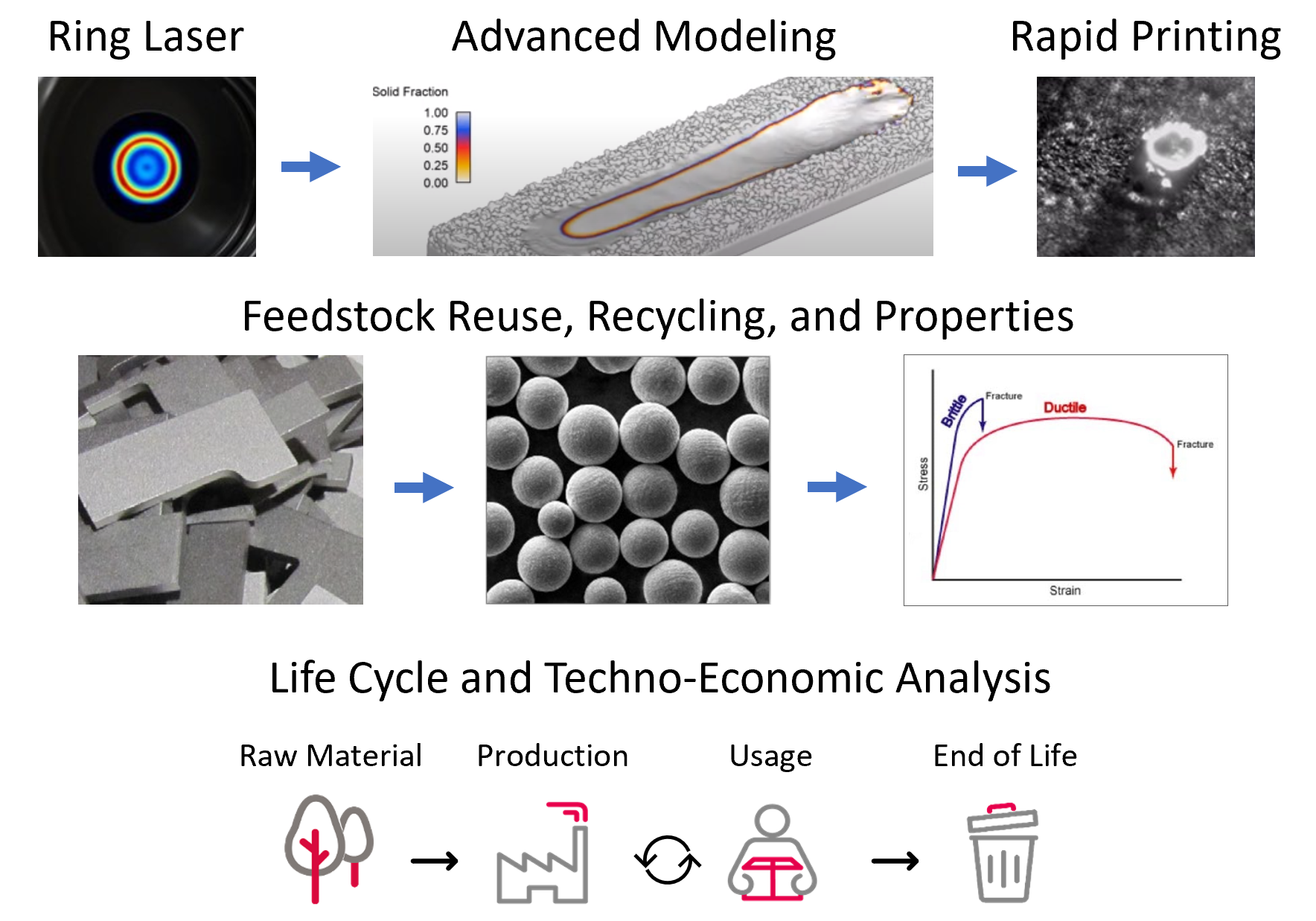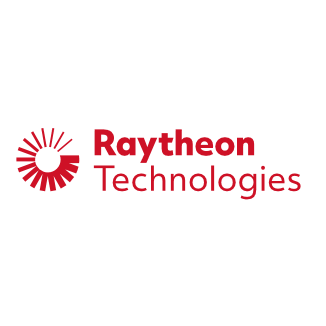


This process will assess how improvements in printing speed, feedstock production, and feedstock recycling can deliver significant manufacturing sustainability benefits to the U.S. Department of Defense (DoD) and its supply base.
Problem
Depending on the print process parameters and feedstock life cycle, additive manufacturing (AM) can be more or less sustainable than conventional manufacturing. Therefore, AM practitioners require a more thorough understanding of the environmental and economic consequences of changes along the full value stream of the printing process.
The most significant factors affecting cost and sustainability in laser powder bed fusion (PBF-LB) are the deposition rate and feedstock lifecycle. Because many of the costs and energy usage associated with PBF-LB are fixed, increased throughput would provide a significant benefit. However, the high energy requirements associated with feedstock production are tied to the volume of printed material. Improvements in feedstock production, reuse, and recycling could provide significant cost and energy savings.
Objective
The Powder and Process Optimization for Sustainable Additive Manufacturing (POSAM) program will demonstrate several approaches to energy reduction in PBF-LB part production. Efficiency gains from an increased deposition rate will be assessed, as well as energy savings during feedstock production and powder reuse and recycling. The consequence of these benefits to the full value stream of the PBF-LB production process will be assessed by techno-economic (TEA) and life cycle analysis (LCA).
The project is anticipated to double deposition rate and reduce feedstock production energy by at least 75% while maintaining part quality, leading to an overall 50% reduction in energy to produce a component.
Technical Approach
The RTX Technology Research Center (RTRC), together with 6K Additive and The University of Arizona, will utilize advanced model-guided process development techniques, emerging commercially available laser optics, and more energy-efficient powder feedstock production methods to optimize additively built Ti-6Al-4V material for deposition rate, feedstock reuse, and feedstock recyclability. This feedstock and print process optimization will be coupled with TEA and LCA to quantify the effect of implementation and fully exploit the benefits to sustainability.
RTRC will investigate the use of an nLight ring-beam laser to increase deposition rate by suppressing melt pool instabilities at high power and scan speed. 6K Additive will supply one baseline and one low-energy powder lot for use throughout the program. RTRC will model the melt pool physics to determine the optimal process region for production of metallurgical specimens to finalize a parameter set. RTRC will then conduct a powder reuse and recycling study to assess mechanical properties over time. The University of Arizona will use measurements taken during feedstock production and printing to quantify the program’s sustainability effects.
Project Participants
Project Principal

Other Project Participants
- 6K Additive
- The University of Arizona
Public Participants
- U.S. Department of Defense
